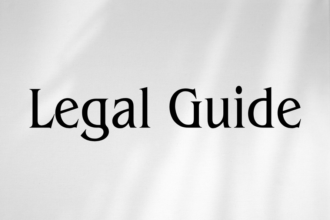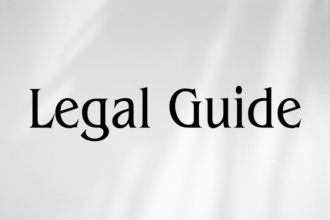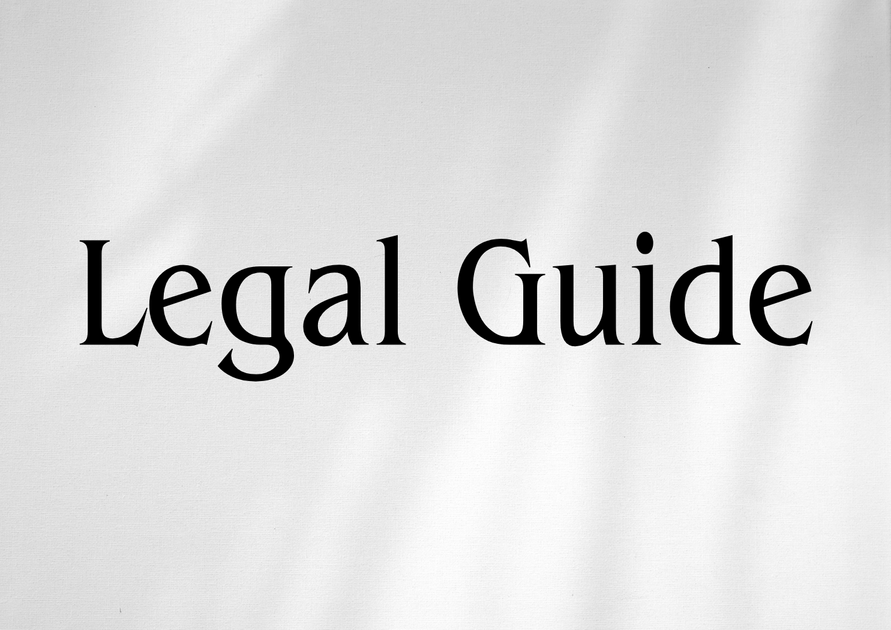Introduction
Saudi Arabia’s prominence as a regional aviation hub has accelerated significantly in recent years, driven by Vision 2030, burgeoning passenger demand, and ambitious infrastructure projects. As the aviation sector expands, robust legal frameworks have become paramount—not just for operational continuity but for ensuring the Kingdom’s regulatory compliance on the global stage. In particular, alignment with the International Civil Aviation Organization (ICAO) and adherence to contemporary international standards has become a centerpiece in Saudi aviation law and regulatory reform. Understanding these dynamics is essential for UAE-based businesses, legal practitioners, and executives managing cross-border aviation interests in the Gulf region. Recent legal updates, increased regulatory cooperation between Saudi Arabia and the UAE, and the mutual drive for world-class aviation safety underscore the topic’s significant regional impact. This article delivers a comprehensive, consultancy-level analysis of how Saudi aviation law aligns with ICAO standards, the legal and strategic implications for UAE stakeholders, and practical recommendations for maintaining legal compliance and commercial advantage.
Table of Contents
- Overview of Saudi Aviation Law
- Understanding the ICAO Framework and International Standards
- Saudi Aviation Law and ICAO: Point-by-Point Alignment
- Comparative Table: Old Versus New Saudi Aviation Law
- Practical Consultancy Insights for UAE Stakeholders
- Case Studies and Hypothetical Scenarios
- Risks, Penalties, and Compliance Strategies
- Conclusion and Forward-Looking Guidance
Overview of Saudi Aviation Law
Legal Foundations and Recent Developments
Saudi aviation is primarily governed by the Civil Aviation Law of Saudi Arabia (the “Civil Aviation Law”), issued by Royal Decree M/44 in 1426H (corresponding to 2005), and subsequently amended to reflect evolving international standards. The regulator—the General Authority of Civil Aviation (GACA)—plays a pivotal role in ensuring compliance with both national legislation and international treaties to which Saudi Arabia is a party, including those established by ICAO.
- Primary Legislation: The Civil Aviation Law (M/44, 2005, as amended), Executive Regulations, GACA Resolutions, and supplementary Ministerial Circulars.
- Key Focus Areas: Air transport operations, aircraft registration, airworthiness directives, licensing and certification, aviation safety management, airport operations, passenger rights, and aviation security.
Recent initiatives—such as the launch of Saudi Arabia’s National Aviation Sector Strategy in 2022 and modernization of regulatory frameworks—further underscore Saudi commitment to harmonization with global aviation standards.
Regional Relevance and Cooperation with the UAE
The strategic partnership between Saudi and UAE authorities has resulted in growing regulatory convergence. The UAE’s own legal updates (including UAE Federal Decree-Law No. 20 of 2023 on Civil Aviation) echo similar objectives regarding ICAO alignment and international best practices, strengthening the legal and commercial ties across the GCC aviation market.
Understanding the ICAO Framework and International Standards
What is ICAO?
The International Civil Aviation Organization (ICAO) is a specialized United Nations agency responsible for establishing global standards for civil aviation safety, security, air navigation, and environmental protection. Its central legal instrument, the Convention on International Civil Aviation (Chicago Convention, 1944), has been ratified by both Saudi Arabia and the UAE, mandating adherence to ICAO’s Standards and Recommended Practices (SARPs).
ICAO SARPs: Key Elements and Their Legal Implications
ICAO SARPs, updated frequently via the Annexes to the Chicago Convention, dictate precise requirements across the following areas:
- Safety Oversight and Management (Annex 19)
- Aircraft Operations and Airworthiness (Annexes 6, 8, 14)
- Pilot Licensing and Training (Annex 1)
- Security and Facilitation (Annexes 17, 9)
- Environmental Standards (Annex 16)
- Air Traffic Services and Navigation (Annexes 2, 11, 12)
Effective implementation involves integrating these SARPs into domestic legal frameworks, which Saudi Arabia has pursued through GACA regulations, direct references to ICAO standards in legal texts, and regular cooperation with ICAO audits and technical missions.
Saudi Aviation Law and ICAO: Point-by-Point Alignment
Legal Incorporation of ICAO Standards
Saudi aviation statutes and GACA regulations explicitly require compliance with ICAO SARPs as the baseline—often exceeding them where local context demands. Below, we detail several domains of alignment and highlight recent legal updates.
| Regulatory Area | ICAO Requirement | Saudi Aviation Law/GACA Regulation | Notes on UAE Law (2025 updates) |
|---|---|---|---|
| Safety Oversight | Establishment of national aviation authority; implementation of State Safety Programme (SSP); regular reporting | GACA General Authority empowered by law; National SSP activated; Regular ICAO audit participation | UAE GCAA enhancement of SSP per Federal Decree-Law No. 20/2023 |
| Aircraft Registration & Airworthiness | Unique registration; airworthiness certification per SARP Annex 8 | Aircraft Registry managed by GACA; Airworthiness standards mirror ICAO | UAE Civil Aviation Regulations (CARs) harmonized in 2023 updates |
| Crew Licensing | Compliant with international pilot licensing and medical certification | GACA licensing structure based on ICAO Annex 1; includes verification with ICAO endorsement | UAE GCAA introduces e-licensing platform, cross-validation |
| Accident Investigation | Independent investigation bodies; mandatory reporting and cooperation | GACA-led Accident Investigation Body, fully independent from operation; alignment with Annex 13 | UAE Air Accident Investigation Sector under MOEI |
| Security Measures | Screening, facilitation, threat response as per Annexes 9 & 17 | Comprehensive aviation security regime; alignment with ICAO AVSEC audits | UAE yearly AVSEC controls, extra security certifications (2024-2025) |
| Environmental Protection | Compliance with Annex 16; noise, emissions standards | Saudi Environmental Control Programs launched for major airports; CORSIA implementation under GACA | UAE’s large-scale sustainable aviation initiatives—Etihad Greenliner, etc. |
Notable Recent Amendments in Saudi Law
- Safety and Airworthiness Directives: Saudi aviation law now explicitly empowers GACA to issue airworthiness directives in line with updates to ICAO SARPs and global best practices.
- Expanded Enforcement: Penalties, audits, and compliance requirements have been revised to facilitate mutual recognition with ICAO and other Gulf authorities.
- Passenger Rights Enhancements: New Saudi regulations (2023) enshrine obligations on compensation, accessibility, and customer support, reflecting EU and ICAO frameworks, and paralleling UAE’s own aviation passenger protection rules.
Comparative Table: Old Versus New Saudi Aviation Law
The following table provides a clear comparison of legacy and current Saudi aviation law, with a focus on ICAO alignment and international best practices.
| Area | Pre-2022 Saudi Law | Post-2022 Saudi Law | Impact for UAE Stakeholders |
|---|---|---|---|
| Implementation of ICAO SARPs | Partial, select incorporation in specific domains; some local variations | Holistic alignment, explicit incorporation, regular audits | Simplifies cross-border operations, increased predictability |
| Safety Management | Limited reference to ICAO SSP | Full SSP adoption & GACA oversight/reporting | Facilitates shared safety benchmarks with UAE |
| Security and Crisis Response | Generic security protocols | Annex 17-compliant security and crisis frameworks | Greater interoperability for GCC operators |
| Passenger Rights | No unified compensation policies | Comprehensive rules aligning ICAO/EU principles | More clarity for UAE-based airlines/partners |
| Environmental Compliance | Minimal regulatory requirements | Annex 16/CORSIA adherence; integrated green policies | Eases sustainable aviation cooperation |
Practical Consultancy Insights for UAE Stakeholders
Strategic Advantages of Legal Harmonization
The alignment of Saudi aviation law with ICAO and international standards presents multiple strategic advantages for UAE-based entities:
- Smoother Cross-Border Operations: Harmonized standards minimize regulatory friction, facilitating easier joint ventures, code-sharing, and airport handling agreements between Saudi and UAE aviation operators.
- Enhanced Risk Management: Predictable legal frameworks reduce exposure to compliance-related disputes and operational delays.
- Stronger Appeals in Dispute Resolution: Recourse to internationally recognized ICAO standards bolsters the position of UAE businesses in any legal proceedings or regulatory reviews involving Saudi partners.
- Market Access: Compliance with ICAO standards is often a prerequisite for participating in international bid tenders or large-scale infrastructure projects within the Kingdom.
Consultancy Recommendations
- Legal Audit and Regulatory Mapping: Conduct periodic audits to ensure your operational manuals, contractual terms, and compliance programs remain fully aligned with both UAE and Saudi aviation regulations as per the latest ICAO SARPs.
- Contractual Protections: When operating in Saudi airspace or in partnership with Saudi companies, draft contracts that expressly reference the applicability of ICAO standards and GACA regulations.
- Data Sharing and Security Due Diligence: Given increased emphasis on aviation cybersecurity (an emerging ICAO focus area), implement stringent data management protocols harmonized with GCC regulations.
Case Studies and Hypothetical Scenarios
Case Study 1: Joint UAE-Saudi Airline Venture
Scenario: A UAE-registered airline seeks to enter a codeshare/joint venture with a new Saudi carrier. Both parties are concerned about differences in safety oversight and passenger rights obligations.
Analysis: Under the new Saudi legal framework, both parties can reference directly applicable ICAO SARPs for safety oversight, ensuring that codeshare operations meet, or exceed, both countries’ requirements. UAE stakeholders should, however, verify that the Saudi partner’s implementation of passenger rights laws (particularly those relating to delay, compensation, and accessibility) are fully enforceable and align with ICAO and EU models already adopted in the UAE. Contractual clauses should require regular legal compliance audits and provide for mutual notification of relevant regulator updates.
Case Study 2: Aircraft Leasing Across Borders
Scenario: A UAE-based aircraft lessor plans to lease aircraft to a Saudi start-up airline. Concerns include airworthiness certifications and liability in case of cross-border incident investigations.
Analysis: Since Saudi GACA regulations now mirror ICAO’s Annex 8 airworthiness requirements, the lessor can rely on certification recognition similar to the UAE’s system. Liability and investigation procedures are governed by GACA’s new independent accident investigation body, consistent with ICAO Annex 13, limiting exposure to surprises in post-incident process.
Case Study 3: Compliance Audit by Saudi GACA
Scenario: A major UAE MRO (Maintenance, Repair, and Overhaul) provider, contracted by a Saudi airline, faces a GACA compliance audit.
Analysis: The GACA’s current audit checklists are based on ICAO protocols, meaning a UAE operator already certified by the GCAA is likely to demonstrate strong baseline compliance. However, unique Saudi procedural or reporting requirements (usually communicated via recent GACA circulars available in Arabic and English) must be addressed through proactive training and legal translation support. Engaging local Saudi legal counsel to manage regulatory engagement is also recommended.
Risks, Penalties, and Compliance Strategies
Risks of Non-Compliance
- Operational Suspension: GACA has authority to suspend flight operations, licenses, and approvals for non-conforming operators.
- Fines and Administrative Penalties: Saudi law provides for substantial administrative fines for safety, security, or environmental breaches.
- Reputational Harm: Failure to comply with ICAO-aligned requirements often results in wider regional blacklisting, restricting market access for non-compliant entities.
Penalty Comparison Table
| Offense Type | Legacy Saudi Penalty | New Saudi Penalty (Post-2022) | UAE (Decree No. 20/2023) Example |
|---|---|---|---|
| Unauthorized Operations | SR 50,000 fine and warning | SR 100,000+ and immediate suspension | AED 100,000+ and 60-day license suspension |
| Major Safety Breach | SR 100,000 max | Up to SR 1M, public disclosure | AED 500,000, publication of violation |
| Environmental Violation | Not specified | SR 250,000 per occurrence | AED 200,000–AED 1M, plus remediation costs |
Visual suggestion: For in-house compliance teams, a streamlined “Saudi-UAE Aviation Compliance Checklist” infographic can assist in audit preparedness (e.g., listing major ICAO SARP areas, document requirements, and contacts for both GACA and GCAA).
Compliance Strategies for Organizations
- Routine Legal Review: Monitor and update internal compliance matrices in line with GACA and UAE GCAA circulars and special bulletins. Subscribe to official gazettes and regulatory portals (such as GACA and UAE GCAA).
- Training and Capacity Building: Institute compulsory annual training on changes to Saudi and UAE aviation law, with a special focus on ICAO SARP updates.
- Effective Stakeholder Engagement: Establish points-of-contact with both GACA and GCAA for prompt regulatory clarification and joint audits or investigations.
Conclusion and Forward-Looking Guidance
The ongoing realignment of Saudi aviation law with ICAO and international standards transforms the regulatory landscape—creating new opportunities and compliance imperatives for UAE-based stakeholders. With comprehensive legal harmonization now in place, partnerships, cross-border ventures, and joint regulatory engagement between the Kingdom and the UAE are poised for accelerated growth. However, this new regime also calls for continuous vigilance, robust compliance systems, and regular consultancy support to mitigate operational and legal risks.
Best Practices for UAE Clients:
- Embed ICAO SARP compliance within corporate governance frameworks.
- Activate cross-jurisdictional legal monitoring programs to track both GACA and GCAA updates.
- Negotiate contracts with express references to ICAO and relevant GACA/UAE GCAA regulations.
- Leverage consultancy expertise for regulatory gap analysis and ongoing training.
As the UAE continues to update its own aviation legislation in 2025 and beyond, the Gulf region’s aviation sector is destined to enjoy enhanced connectivity, safety, and commercial opportunity—provided legal compliance remains a top priority. Engaging with experienced legal advisors specialising in aviation is essential for sustaining compliance, competitive advantage, and operational excellence in this dynamic landscape.




